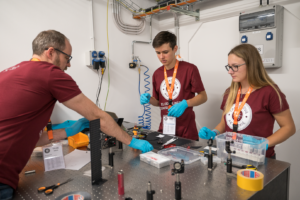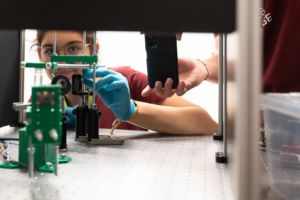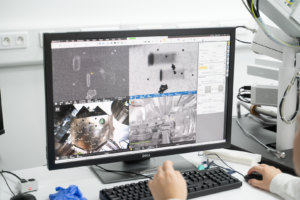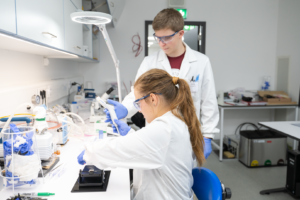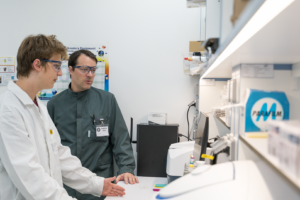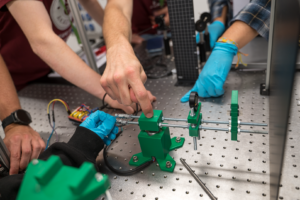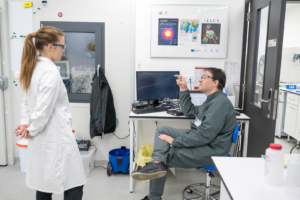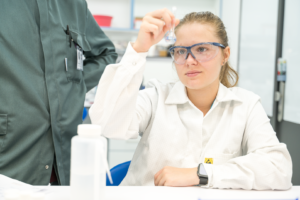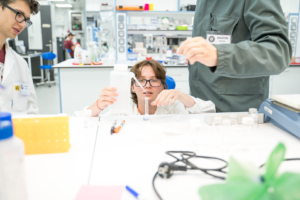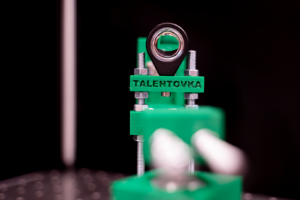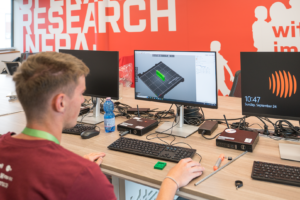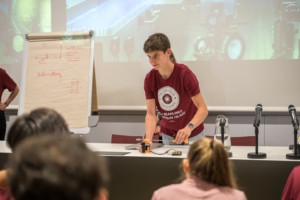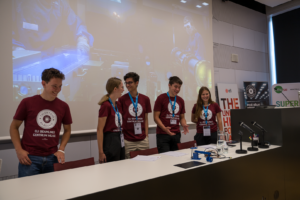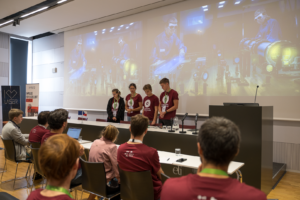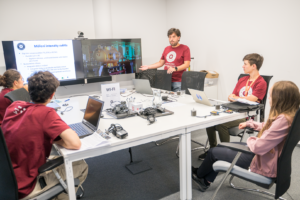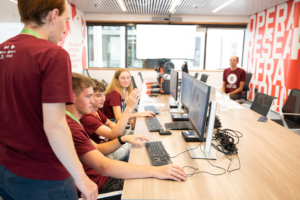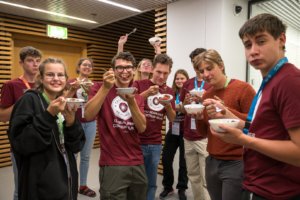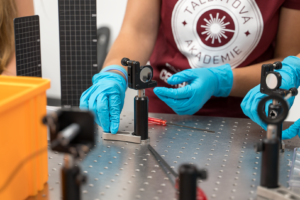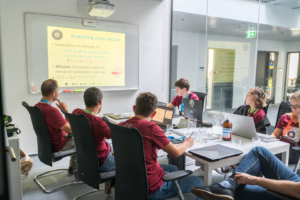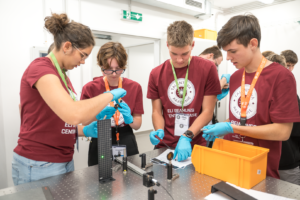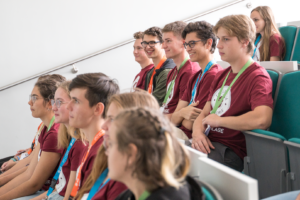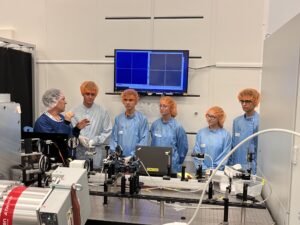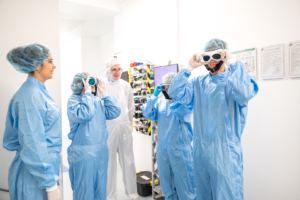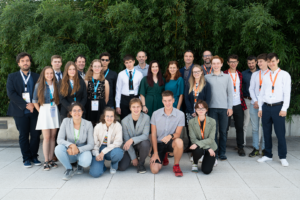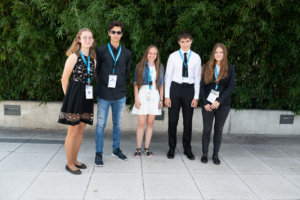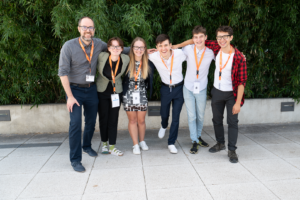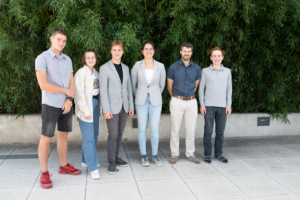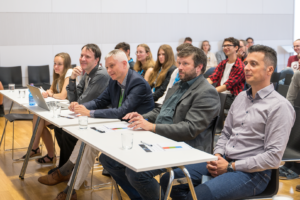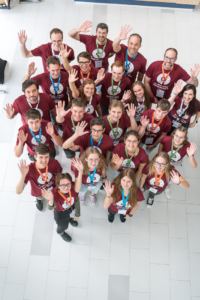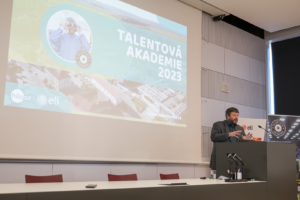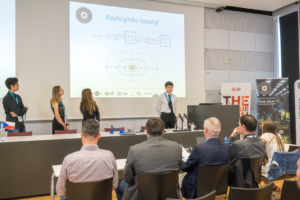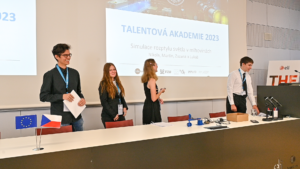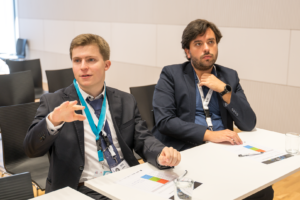Has it ever occurred to you that the colourful nature of nebula is due to small dust particles, only a few nanometres in size, made up of just a few thousand atoms? And that a model of these nebulae can be created in a lab using gold nanoparticles? And how about aiming a laser at these nanoparticles? Both laser centres in Dolní Břežany, ELI Beamlines and HiLASE, focus on Space applications as part of their activities. That is why a dozen talented high school students tried all of that last weekend at ELI Beamlines and the HiLASE Centre. On September 23 – 25, the final of the 6th year of the Talent Academy took place.
Every year, three teams of high school students stand in front of a challenge prepared by our scientists. They are given 30 hours to solve a difficult scientific problem. They spend ten hours in a chemistry lab synthesizing samples, tackling 3D printing and microcomputer programming, building a set-up at a laser lab and solving complex theoretical equations. If the whole team works as it should, on the third day around dawn, all of this fits together like puzzle pieces to be presented by the teams to the employees of ELI Beamlines and the Institute of Physics (which the HiLASE Centre is a part of) at a scientific conference.
“I didn’t expect that high school students would be capable of so much. Not only did they work with university-level statistics even at 3 a.m., they also came up with solutions that a member of a research team at one of the laser centres wouldn’t be ashamed of,“ says Tyler Green, Head of laser system L2–DUHA at ELI Beamlines, about his first experience mentoring a team of students.
All of this would not be possible without scientists. And there are many of them behind the Talent Academy. Whether they are preparing scientific projects, leading professional workshops, helping students with laboratory work or leading one of the teams. “ The research project on Talent Academy is really complex and it is our task to make sure the high school teams can solve it. We teach them the necessary theoretical knowledge, we help them with complicated processes in the labs and aid them in going from an idea to a successful presentation,“ says Yoann Levy, Leader of the Laser Material Processing Team at the HiLASE Centre, describing the role of scientists. Tyler and Yoann are two of the international researchers from the laser centres, who participated in Talent Academy this year so that the students could experience the international aspect of research work.
The whole weekend was in the spirit of desire for discovery motivating students to overcome all the obstacles that stood in their way. Even though they still couldn’t program on Friday, by Saturday they were already coding a program that controlled the entire measurement system. Some of them had never been in a chemistry lab before the Talent Academy and second day they were already making gold nanoparticles and measuring their size with a transmission electron microscope. It was a long journey for all of them, but one that led to a successful result in data-simulating space nebulae.
The students presented their results to the staff of both laser centres at the final conference. Among the audience was the director of the Institute of Physics of the CAS, Michael Prouza, who told the students: “I am pleasantly surprised at how well prepared the presentations were and how well they captured the entire weekend science project. From my own experience, I have to say that even at international scientific conferences we often encounter worse performances and results of work than we could see here today. That is also why I am convinced that we will definitely meet again at IoP, ELI Beamlines or the HiLASE Centre and that your career will only continue on that beautiful upward trajectory.”
And what’s next for Talent Academy graduates? The most successful of them will join our scientific teams during summer research internships. The selected students will become guides for the finalists of future editions. Finally, the Talent Academy helps all graduates to launch their careers as young scientists, and we are already meeting some of the Talent Academy alumni in the hallways of the centres.
For more information, photos and videos from the finals, please visit the Talent Academy’s social networks: www.facebook.com/TalentovaAkademie/ and www.instagram.com/talentovaakademie/




